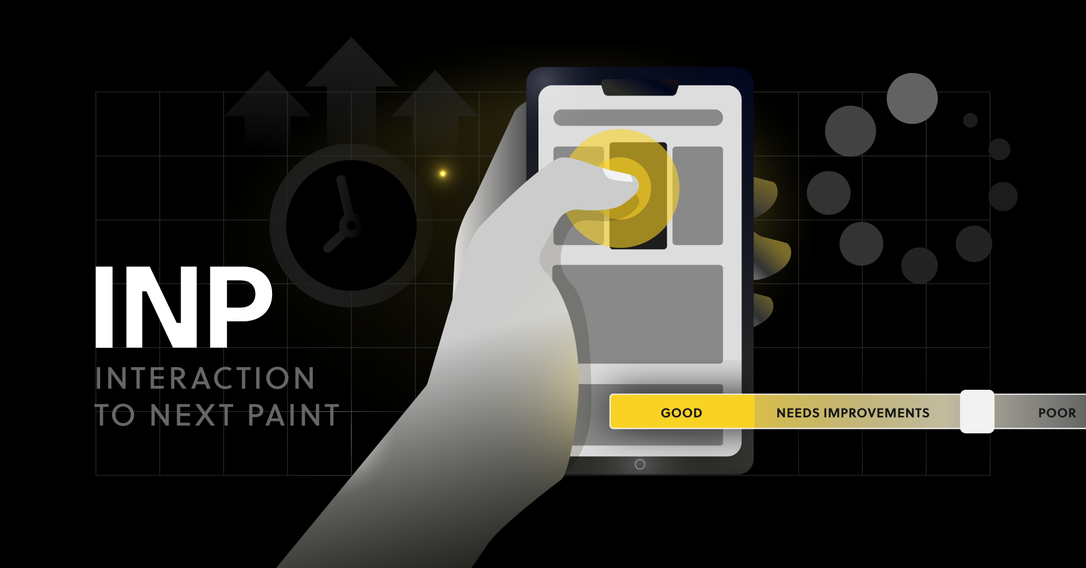9 min
API - Application Programming Interface in Practice
In the dynamic world of e-commerce, having robust and well-designed Application Programming Interfaces (APIs) is crucial for business growth and meeting modern demands. You can compare it to computers from the 90s, which had limited connectivity with modern devices without the USB standard. The lack of a consistent system for data exchange makes it difficult to seamlessly integrate with payment systems, warehouse tools, or marketing platforms. APIs, like a universal interface, power modern online stores, enabling efficient communication, integration, and continuous development.
From this post, you'll learn what an API is, how it works, and why it's crucial for your online business – both for e-commerce owners and developers.
Listen to the audio version of this article.
What is an API? The key to digital communication
API (Application Programming Interface) is a set of rules that allow different computer programs (applications) to communicate with each other. It forms the foundation of modern software architecture, enabling the creation of complex, yet flexible and responsive systems.
Think of it like a restaurant menu. When you go to a restaurant, you don't go into the kitchen and cook yourself. Instead, you use the menu to order what you want. The chef (i.e., another program) prepares the dish and serves it to you.
In this case:
You (your application) are the client.
The menu is the API.
The chef (another application or service) is the API provider.
The dish is the data or function you receive.
Thanks to APIs, your application can ask another application for specific information or to perform an action, without needing to understand how that second application works internally. This makes building complex systems much simpler and faster.
How Does an API Work?
An API operates on a Request-Response communication model, meaning one application (the client) sends a request to the API, and in response, the API provides the necessary data or confirmation of an operation's completion (response). This happens in a structured way, according to the rules defined by the API.
It works like this:
The client sends a request: The application that needs data or wants to perform an action (e.g., a mobile app, a website) sends a request. It contains precise information about what it expects.
The server processes the data: It performs all necessary operations to fulfill the client's request.
The API returns a response to the client: The response from the server is delivered back to the client in a defined data format, most often JSON (JavaScript Object Notation) or XML (Extensible Markup Language).
So, what exactly is an API composed of? What elements does it rely on? The most important elements ensuring effective communication between applications are:
Endpoints: These handle the exposure and organization of API resources or functions, allowing software to send requests and receive responses in a strictly defined manner.
Authentication Methods: API keys, for example, are used for authentication and authorization, ensuring that only authorized applications have access to the API and its resources, and also help manage load. Tokens or digital certificates can serve the same function.
API Documentation: This is an essential guide for developers. It describes the available endpoints, required parameters, data formats, and possible responses and status codes (e.g., 200 OK, 404 Not Found).
Product and Inventory Data Synchronization
In situations where your application doesn't offer satisfactory automation, or if you plan to give access to data to an external system, web APIs of this "category" will certainly help. They simplify the automatic addition, modification, and deletion of products, management of their prices, descriptions, and above all, synchronization of inventory levels between the store and the warehouse system, preventing the sale of unavailable goods.
Creating Custom Shopping Experiences
APIs enable developers to build completely custom storefronts (known as headless commerce). They allow for the free retrieval of product and shopping cart data, which can then be presented in any form, regardless of the default e-commerce platform.
Logistics and Delivery Optimization
These interfaces help automate the shipping process. They enable real-time shipping cost calculation, courier label generation, and package tracking, which is crucial for efficient and fast order fulfillment.
Order and Customer Service Automation
Although many business applications offer basic functionalities for order management or customer relations, APIs will help you streamline the entire order cycle – from placement, through status updates, to handling returns. Additionally, they allow integration with CRM systems and customer service tools, enabling personalized communication and effective support.
Personalization and Marketing
APIs also allow dynamic adaptation of offers to the customer and automation of marketing activities. They can be used to manage discount codes, plugins, customer segmentation, or integration with platforms for sending transactional and marketing emails.
Payment System APIs
APIs allow you to securely process online payments. Thanks to them, a store can integrate with payment gateways, offering customers various payment methods such as cards, transfers, or digital wallets.
Types therefore refer to the business context and the functions they perform within the application ecosystem. Dividing them into categories is essentially incorrect.
Types of Application Programming Interfaces: Classification by Architecture and Technology
When we talk about "types" of APIs, we are referring to the architecture and technology that define how an API is designed and how it technically operates at the level of protocols, standards, and communication mechanisms. This complements the knowledge of what an API does functionally, specifying how requests and responses are processed, the data formats used, and the architectural approach employed. The choice of the appropriate API type directly impacts flexibility, scalability, and ease of integration in the e-commerce ecosystem.
REST API (Representational State Transfer)
REST API is a popular architectural style for building application programming interfaces that utilizes standard HTTP methods, such as GET, POST, PUT, and DELETE.
It enables communication between systems through data exchange, and most often works in JSON or XML format. Thanks to RESTful API principles, such as statelessness and a uniform interface, it provides developers with a convenient way to integrate various online services and resources, creating scalable and flexible web applications.
Due to over two decades of market presence, REST API has a very mature ecosystem, which in turn means a wealth of resources, examples, and well-established practices.
Example in Javascript: A GET /products request retrieves a list of products.
Application: REST is the dominant standard in e-commerce, valued for its ease of integration with various systems, real-time data access, and compatibility with modern frontends, such as SPA (Single Page Application) or mobile applications. It is synonymous with scalability, ideal for headless commerce.
SOAP API (Simple Object Access Protocol):
This is an older, more formalized communication protocol that relies on XML for structuring messages (the so-called SOAP Envelope). SOAP has earned a reputation for reliability, offering built-in, rigorous security standards (WS-Security) as well as transaction and error handling mechanisms. This reliability, however, comes with greater complexity, which is why SOAP finds fewer adherents in modern e-commerce, giving way to REST and GraphQL.
Application: Often used in older enterprise systems, e.g., banking, government, or insurance, where high reliability, strict contracts, and rigorous security standards are a priority, and flexibility takes a back seat.
GraphQL API
Created for Facebook, GraphQL is a truly innovative query language. Its key advantage is that it allows the client to precisely specify what data it wants to receive, in a single query. It can select exactly the fields and related entities it needs instead of responding "in full sentences." This minimizes network traffic (eliminating so-called over-fetching, i.e., retrieving unnecessary data) and the number of requests. It is also extremely convenient for aggregating data from many different systems within a single API.
Example: A GraphQL query can retrieve only the product name and price, and the reviewer's first and last name, instead of the full product object with all data.
Increasingly popular in e-commerce, especially in headless commerce, it also works well in mobile applications and SPAs.
Benefits of API Integration in E-commerce
API integration is the foundation of modern e-commerce, enabling efficient development and competitive advantage. Thanks to APIs, systems communicate with each other, bringing a number of key benefits:
In summary, API is a strategic tool that drives development, builds market advantage, and creates the future of e-commerce.
Process Automation
Better User Experience
Scalability and Flexibility
Data Analysis
Challenges of APIs
API (Application Programming Interface) is a set of rules that allow different computer programs (applications) to communicate with each other. It forms the foundation of modern software architecture, enabling the creation of complex, yet flexible and responsive systems.
Think of it like a restaurant menu. When you go to a restaurant, you don't go into the kitchen and cook yourself. Instead, you use the menu to order what you want. The chef (i.e., another program) prepares the dish and serves it to you.
In this case:
You (your application) are the client.
The menu is the API.
The chef (another application or service) is the API provider.
The dish is the data or function you receive.
Thanks to APIs, your application can ask another application for specific information or to perform an action, without needing to understand how that second application works internally. This makes building complex systems much simpler and faster.
Examples of APIs in Everyday Life
APIs revolutionize e-commerce through practical applications in spheres we encounter daily. You will undoubtedly recognize the most popular types of APIs you've become accustomed to:
Payments: APIs from operators like Stripe, PayU, or Blik ensure secure transaction processing and status updates.
Logistics: Connecting with courier companies (DPD, DHL, UPS) automates label generation, shipment tracking, and return management.
Invoicing: Accounting systems (e.g., Fakturownia) automatically generate documents thanks to APIs.
Marketing Automation: APIs of tools like Mailchimp or Klaviyo enable customer segmentation and sending personalized campaigns.
WMS and ERP Systems: APIs allow real-time synchronization of inventory and product data.
SEO and Data Analysis: APIs of tools like Google Analytics or SEMrush provide data on keywords and user behavior.
| Area | Example Systems/APIs | Effects in Daily Life |
|---|---|---|
| Payments | Stripe, PayU, Blik | Instant, secure payments |
| Logistics | Stripe, PayU, Blik | Package tracking, quick label generation |
| Invoicing | Accounting systems API, ERP | Automatic document generation |
| Marketing Automation | Mailchimp, Klaviyo | Personalized e-mail campaigns |
| Inventory & ERP | Systems WMS/ERP API | Up-to-date inventory and product data |
| Analytics and SEO | Google Analytics, SEMrush API | User data, SEO optimization |
Example: Imagine you're ordering a pizza online. After selecting ingredients and clicking "pay," the system needs to verify your transaction and then understand what order to send to the kitchen so the chefs can start preparing immediately. What seems like a simple query therefore needs a systematized instruction, which the API defines.
What Does API Mean for Marketing and SEO?
Effective marketing and SEO are key to success in e-commerce, and APIs play an important role here:
Keyword Analysis: APIs of tools like Google Keyword Planner or SEMrush provide data on the popularity of phrases, e.g., "what is API" or "API interface," enabling the creation of optimized content.
Campaign Automation: APIs of platforms like Klaviyo or HubSpot allow sending personalized emails, e.g., about abandoned carts.
Traffic Monitoring: The Google Analytics API provides data about users, supporting UX and conversion optimization.
For e-commerce owners, APIs in marketing mean precise campaigns and better visibility in search engines. For developers, it's a very convenient way to synchronize with analytical tools without writing code from scratch.
API - The Foundation of Headless Commerce Architecture
Headless commerce involves separating the frontend from the backend, and the API acts as their connector. This allows for free combination of technologies, for example, integrating React for the presentation layer with Shopify for store management. What's more, API-first and composable commerce philosophies allow for the creation of a consistent ecosystem from precisely selected components, which guarantees unparalleled flexibility, scalability, and implementation speed.
API - Your Key to the Future of E-commerce
API is the foundation of modern e-commerce, enabling system integration, automation, marketing optimization, and scalability. Thanks to APIs, stores operate faster and more efficiently. At BeeCommerce, as experts in headless commerce, we help build API-first platforms that drive business growth. Contact us and start building a modern, scalable online store today!







